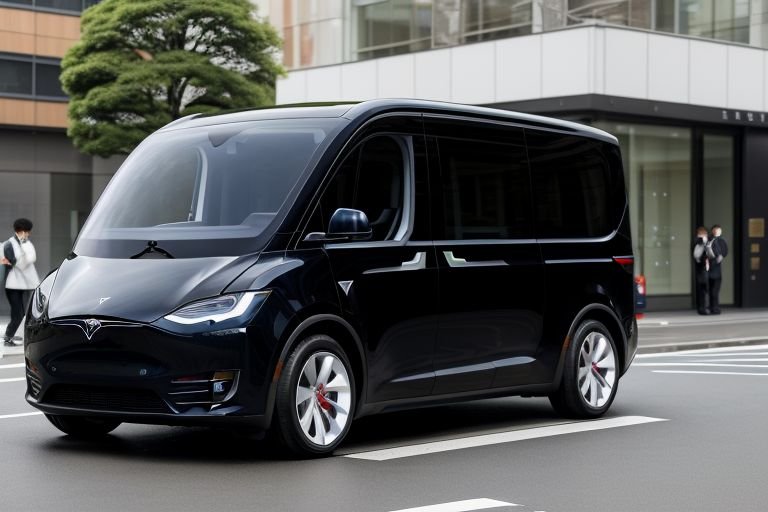In a highly-charged, jubilant launch in Tokyo today, Tesla and its chief, Elon Musk showcased two marvelous products Cybercab and Robovan. The presentation which was held at the recently inaugurated Institute of Science Tokyo is a signal of the evolution of Tesla’s product strategy towards the future of automated transport solutions.
Other focal attractions bespoke to the design approach included the Cybercab, an intelligent and futuristic autonomous taxi car in the cylindrical angular body design of Cybertruck. The Cybercab was said to be going into production in 2026, and the vehicle will then retail at below $30,000. With this intense pricing strategy, the company targets to bring the costs of autonomous transportation to the mass market level to increase uptake of self-driving technology.
In the presentation, the focus was on AI technologies built into the Cybercab, which, according to Musk, will be safer and more efficient than human drivers. This program is supplied with a set of sensors and cameras, backed with new neural network processors, allowing the vehicle to maneuver around modern cities as precisely as possible.
While launching the Cybercab, Musk also unveiled the Robovan, an unmanned delivery vehicle that has come up to change the concept of final-mile transportation. Making several stops on a single route, the Robovan is designed to accommodate packages and multiple cargoes depending on its route and function. The foray into the delivery sector means that Tesla is planning to disrupt the sphere of transportation as multiple times as possible.
The introduction of these prototypes in Tokyo is quite deliberate. Japan is a perfect example because of the increasing rate of an aging population and labor scarcity in the country. To back up these claims, Musk focused on how Tesla’s autonomous solutions could help Japan solve its transportation issues, particularly in multiple regions where there are no easily available means of public transportation.
The latest products from Tesla’s production line are nicely considered by industry analysts as market strategies for regaining the lost position of Tesla in the autonomous vehicle market. Other traditional automakers and tech players are also venturingätze into creating self-driving technology, but due to its audacious strategy and focus, Tesla has the advantage.
However, the way to widespread adoption of highly automated vehicles – as well as many other benefits of advanced vehicle technologies – is not obstacle-free. There are still key challenges, such as regulatory, procedural, and technical, coupled with a general and well-founded distrust of biopharmacological products. These issues were also tackled by Musk in a Q&A forum, including Tesla’s interaction policies with particular emphasis on regulators, as well as the real-world crash tests that Tesla puts through its automobiles’ autopilot systems to increase safety.
It also provided details on conceiving batteries, a critical component if electric self-driving cars are to become a reality. Musk confirmed that both Cybercab and Robovan will use the new generation of battery cells in Tesla’s vehicles, which will have better range and faster charging.
These launches have caused waves in automotive and technological sectors as the announcement came out. Rivals are keenly observing Tesla’s actions with many of them likely to step up the pedal on their level of autonomy. The competition for control of the self-driving market is heating up even more, billions are on the line.
Environmentalists have commended Tesla for not relenting in their drive to healthy mobility solutions. The Cybercab and the Robovan as vehicles that are operated as shared service pods that are completely electrically powered, may help to substantially reduce the rate of carbon production in densely populated cities.
At the end of the event, Musk sounded positive about prospects of future collaboration between his companies and Japanese tech firms and scientific research institutions including the recently founded Institute of Science Tokyo. Such partnerships could equally help to enhancing the pace of developing the self-driving technologies, and the company’s presence in Asia.
The presentation of the Cybercab and Robovan can be viewed as a significant turning point in the company’s development from an electric vehicle producer to an omnibus self-driving transportation system. As these vehicles go from concept to reality, they are also set to revolutionize personal transport and, indeed, commerce in cities worldwide.
These announcements today showed how Tesla is again able to bring fantastic technology to the world stage. While the automotive industry as a whole seems poised on the edge of an autonomous revolution, all shall be watching how Tesla will integrate the command and steer the automobile industry to the post self-driving future.


